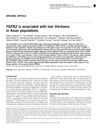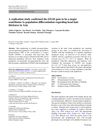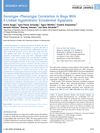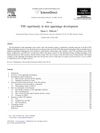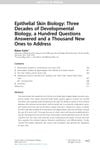Divergent Genetic Mechanism Leads to Spiny Hair in Rodents
February 2018
in “
bioRxiv (Cold Spring Harbor Laboratory)
”
TLDR Rodent spiny hair traits are due to genetic factors other than the Edar gene.
The study investigated the evolution of spiny hairs in six rodent families, revealing two distinct hair morphologies: grooved cross-section and near cylindrical form, both exhibiting higher tension and stiffness compared to ancestral elliptical-shaped hairs. The research explored the genetic basis of this convergent evolution, specifically examining the Ecdysoplasin A receptor (Edar) gene, known for influencing hair traits in humans. Despite identifying a single amino acid change (V370A) in Edar, which affects human hair, this mutation was not linked to rodent hair morphology differences. The findings suggested that different mutations in Edar or other genes were responsible for the spiny hair variations observed in rodents.
